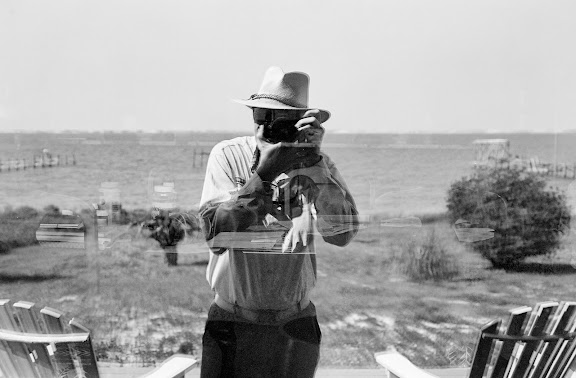OMG...did Jim buy another camera? No. I will explain.
My dad was a Canon man for many decades. In fact the Canon FTb QL that I have was gifted to me by dad in the mid-1970s. He had the same camera. Flash forward to 1985 and dad upgraded to the Minolta Maxxum 7000. It is an interesting camera. Per Wikipedia and Ken Rockwell, the Maxxum 7000 was the first truly autofocus (AF) SLR in the industry. There had been a few attempts by Nikon and Canon but apparently Minolta got it right with the Maxxum 7000. Fun fact, these early AF lenses were driven by a motor in the body of the camera. The drive shaft of the motor terminated at the surface of the lens mount. In the lens was another drive shaft which keyed to the camera body shaft. Turning the focus motor in the body rotated the drive shaft in the lens to position the helicoid which focused the glass. Looking at the lens mount on the bodies and lenses of these camera systems you can see the drive shafts. These types of focusing systems can make a lot of noise but they work well. In addition to this Maxxum 7000, my Nikon N90 also hosts the lens focus motor in the camera body and used the same drive shaft arrangement into the lenses. Over the intervening years the motors got small and much quieter and were moved into the lenses themselves. They are also much faster in achieving focus.
However, regarding useable AF, Minolta started it all with the Maxxum 7000. Minolta named their mount the "A mount." A few years later, Minolta and Konica merged then a few years after that they got out to the camera business. The photographic side was sold to Sony who went on to make very nice SLRs and DSLRs using the Minolta A mount. In fact, Sony finally dropped their DSLR/SLR A mount line in 2021 to focus their efforts solely on mirrorless camera production.
In addition to AF, the Minolta hosts what has become the standard "PASM" lineup of exposure modes - Program, Aperture priority, Shutter priority, Manual. There are also multiple drive modes and you can vary exposure compensation. Pretty advanced stuff back in 1985.
With regard to the lead in, this was my dad's camera. A few years ago while visiting my sister, also an amateur photographer, she handed over to me a box of old cameras. Along with a Nikon F hosting a 50mm f/1.4 lens (which was CLA'd and sent to my son who loves shooting film through it) and a host of other cameras, was the Minolta Maxxum 7000. The plastic was covered in a nasty white substance and there were missing pieces of plastic on the grip area. Attached was a 28mm lens which was missing a few pieces. Additionally, there was a boxed Minolta 50mm f/2.8 Macro and a boxed Minolta 75-300mm f/4.5-5.6 telephoto zoom. Given the condition of the camera and the attached lens I placed it on a shelf and forgot about it.
Flash forward a few years and while cleaning house of unused camera gear I again came across the Minolta. Dusty, covered in the white mung, a few broken areas on the grip, it was in my hand and I was walking to the garbage bin to toss it when I opened the back. Very clean inside. "Hmmm" I thought as I loaded four AA batteries and turned it on. Guess what? The camera fired right up. The 28mm lens was toast and it was tossed. However, the 50mm Macro lens mounted and, after a few minutes of focusing near and far to get the shafts turning again, it seemed to work just fine. I spent an hour or so cleaning the camera then loaded a roll of Ilford XP2 Super and started shooting.
Yesterday I developed the roll of film and this morning I scanned a few of the images. Not bad at all. As far as I know dad bought the camera in 1985. He passed in 1999 and was sick for a number of years prior to his passing. I suspect the camera hadn't been used in nearly 30 years. A few of the images are below. There may be a few focusing issues with the lens as subjects at infinity don't look as sharp as I am used to seeing on film. Much better at closer distances. Haze? Focus issues? Not sure. However, I am very pleased to have not thrown the camera away. Dad's Canon FTb is long gone (although I have his personalized Canon ever-ready case and the Canon telephoto zoom he used) so I am very happy to have this camera. Better still, it works! The various exposure modes worked as designed, there were no light leaks and the auto rewind worked great as well.
This camera won't become one of my regular film shooters, that status is reserved for the Leica M3 and the Olympus XA2, but I will run a roll through it on a periodic basis when I want AF and auto exposure capability.
Regarding the roll of XP2, it was developed in Kodak's HC-110 using the 1+47 dilution at 24C. I wanted to experiment with contrast control through development and I decreased the recommended developing time by 15%. This gave me a final developing time of 6:10. Happy with the results. In addition to this roll, I developed, using the same contrast control methodology, a roll of FP4 in 120 that was shot through the Yashica 124G. I haven't scanned any of those images yet (the negatives look glorious!) but will soon and report results.







No comments:
Post a Comment